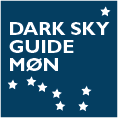What can help you see the night sky?
Observing the night sky can be a rewarding and awe-inspiring experience, and there are various tools available to enhance and facilitate this activity. Here are some common tools used by astronomers and stargazers for observing the night sky:
Naked Eye
The most basic tool for observing the night sky is the naked eye. Many celestial objects, including stars, planets, and the Moon, can be observed without the need for any equipment.
Binoculars
Binoculars are a popular and versatile tool for stargazing. They provide a wider field of view compared to telescopes, making them ideal for observing large portions of the night sky, star clusters, and even some deep-sky objects. They are also portable and easy to use. We recommend large aperture binoculars as the first investment if you are interested in the night sky. There are excellent wide angle binoculars available. Look for 2x magnification and around 50 mm lens diameter.
Telescopes
Telescopes come in various designs and sizes, each suited for different purposes. Some common types include refractors, reflectors, and compound telescopes. Telescopes allow for detailed observations of planets, the Moon, stars, and deep-sky objects like galaxies and nebulae.
Telescope Eyepieces
Eyepieces come in different focal lengths and designs, allowing observers to adjust the magnification and field of view of their telescopes. A variety of eyepieces can enhance the versatility of a telescope.
Spotting Scopes
Similar to telescopes but generally more portable, spotting scopes are popular for daytime and terrestrial observations. Some models can also be used for basic stargazing.
Star Charts and Apps
Star charts and astronomy apps help identify and locate celestial objects in the night sky. They provide maps of the stars and constellations based on your location and the time of year. Mobile apps often use augmented reality to overlay information on your device's screen as you point it at the sky.
Red Flashlight
A red flashlight is useful for preserving night vision while reading star charts or adjusting equipment in the dark. Red light is less disruptive to your eyes than white light.
Astronomy Software
Computer programs and online tools, such as Stellarium, SkySafari, and Starry Night, simulate the night sky on your computer or mobile device. They allow you to plan observations, simulate celestial events, and explore the sky from the comfort of your home.
Sky Quality Meter
A sky quality meter measures the darkness of the night sky, providing an indication of light pollution levels in your observing location. Dark skies enhance the visibility of celestial objects. We use these to monitor the sky, but do not recommend them for casual observers.
Astrophotography Equipment
For capturing images of the night sky, astrophotographers use cameras, tracking mounts, and other specialized equipment. Astrophotography allows enthusiasts to capture stunning images of planets, deep-sky objects, and even the Milky Way.
When choosing tools for observing the night sky, consider your level of experience, budget, and specific interests in astronomy. Additionally, learning how to use your equipment and understanding the basics of celestial navigation will contribute to a more enjoyable stargazing experience.
